|
Read this to help your baby water turtle live a healthy and happy life. They should not be purchased as it is illegal to sell them anywhere in the states if they are under four inches. You cannot give them away as prizes either.
Baby Water Turtle Care Water turtles can live 50 or more years if treated properly and eventually moved to an o outdoor pond. Read this to help your baby water turtle live a healthy and happy life.
Last night when I went to put the turtles away, I saw that Popcorn the 125 lb Sulcata had not eaten his breakfast, which is very odd. I looked in his house and saw that he was almost invisible and was below the level of the dirt.
The house is 12 feet long, so I could not get in there without suiting up. I was scared that he was digging a tunnel underground or that he was dead or upside down. I prayed to St. Francis and St. Anthony that things would be OK. This morning I put on long sleeves and gloves, tied my pants legs closed at the ankle, put on a shower cap and grabbed my wide snow shovel. He was alive, and so I gave him a banana to keep him busy far away in his enclosure. They are not allowed to eat fruit so this was a big deal. I crawled and tried to refill the depression but realized the dirt was as hard as a rock, so I think the 6 months of heavy rain turned that area to mud and now it has hardened. Thank goodness as digging "burrows" is a no no for tortoises. They can collapse on them or they can actually dig so far that they go under a neighbor's house or worse. All's well but this was a good reminder of what it takes, caring for a tortoise! Be prepared to sacrifice yourself for your turtle or tortoise if there is a problem. - Susan, American Tortoise Rescue, 2023 Malibu, CA – July 17, 2023 – American Tortoise Rescue (ATR), the first national turtle and tortoise rescue, is sending a plea to parents – buy toys, not turtles. Seth Rogen, a producer on the film, saw the first Ninja movie as a youngster in 1990, the same year ATR was founded, and is expected to draw more crowds than in the past.
History shows that after the release of a series of these successful Ninja movies, turtles lose their lives through the pet trade. Most of the turtles have been scooped out of the wild to be sold in pet stores or over the internet. After seeing the film and thinking real turtles jump through the air or fly like Ninja turtles, kids ask parents to buy live turtles. Sadly, after bringing the turtle home, sticking it in a small tank and waiting for it to perform, kids abandon interest when nothing happens – the turtle just sits there. The best thing parents can do is purchase action figure toys that actually mimic the ninja movements from the film. “I like to say putting a turtle in a tank is how we would feel if we had to live in a bathtub all our lives,” said Susan Tellem, co-founder and executive director of ATR. “After the successful release of previous Ninja films, turtles, most commonly the red eared slider or box turtle, were purchased by the thousands for children who wanted their own Ninja turtle. The purchase is often an impulse buy without regard to the fact that turtles can live 25 years or more. Sadly, most of these turtles were abandoned in shelters and rescues or dumped into lakes and waterways (or worse toilets) after the movie’s young fans found out that the real turtles did not fight crime or perform incredible stunts.” Tellem says that this proved disastrous for thousands of turtles. “Red eared sliders easily identifiable because of the red stripe next to their eyes, are the most common turtles given up for adoption,” she said. “We recommend only adopting these turtles to people with private ponds where they can mimic their natural habitat. We, along with many rescues, have to turn away hundreds turtles annually because we are at capacity. Unfortunately, no one tells the potential owner that these turtles live long lives instead of staying a cute little quarter or palm size,” Tellem said. For more information, contact Susan Tellem at [email protected]. Follow on twitter @tortoiserescue and on Facebook at AmericanTortoiseRescue. Suggested tweet: Buy #TMNT toys not live turtles for kids. Honoring Our “Senior Class”: Squish, Bunkle, Spinner, Queenie and Fluffy, Featured on New Shirt!8/4/2022
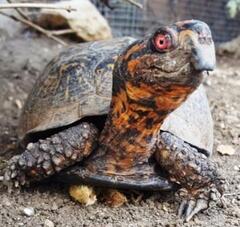 August 2, 2022 - Malibu, CA - American Tortoise Rescue launches “Senior Class,” a fundraiser honoring the sanctuary’s oldest residents and benefitting the turtles and tortoises at the nonprofit rescue. Squish, Bunkle, Spinner, Queenie and Fluffy are featured on the new shirts and totes at https://www.bonfire.com/store/american-tortoise-rescue/ Since 1990, more than 4,000 turtles and tortoises have passed through the gates at American Tortoise Rescue’s sanctuary in Malibu, CA. Some were lost, some were no longer wanted by their owners and some were being smuggled on their way to other countries. Each one has a story…some happy, some sad and some Susan Tellem and Marshall Thompson, the co-founders, will never know. They come in many sizes, colors, shapes and personalities. Some are funny and some like to hide. Some love worms and others like to eat strawberries. Some live in a pond, but most live on land. Squish – An Eastern Box Turtle, he came to the rescue with a caved in waist formed by a plastic ring around canned drinks that someone carelessly tossed on the ground. He lives normally on the easy coast, but came to us many years ago, and we removed the ring, letting his growth pattern be normal. Now 30 years later, there is only a small concave part on one side where it used to be! Bunkle - Bunkle, an Eastern box turtle, was the first land turtle to arrive at American Tortoise Rescue in 1990. The sanctuary received a call from someone who had found him wandering in the street in a nearby town. He immediately took over as king of the shelter, bossing every new turtle that comes in. His strong presence and constant patrolling of the sanctuary earned him the title of “mascot” which he holds 32 years later.  Spinner - Spinner is an old three toed box turtle, one of many millions taken out of the wild with cruel hooks to feed an insatiable pet trade. Spinner is a special needs turtle who got her name because she constantly turns in one direction due to a spinal injury from either a car or a human that left her unable to move her arms and legs properly. She’s part of a population of about 100 unadoptable turtles with special needs at the sanctuary special needs hospital where she has spent 20+ years, and lives with other special needs turtles who need daily supervision.  Queenie - An Asian box turtle, Queenie is one of many exported out of Asia in bulk to feed a growing pet trade, as well as an appetite for food or medicinal aids. Queenie suffers from many deformities as a result of poor care from her former owner, including a misshapen jaw and overgrown shell (note the thick deformed carapace). She joined a population of about 25 Asians at ATR, most of which suffer from similar problems. These turtles are shy and gentle creatures who just want to be wild, so they have free run of the sanctuary where they eat, hide and sleep safely. 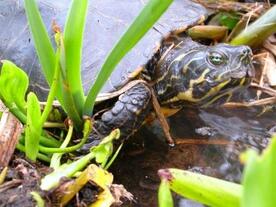 Fluffy - Fluffy is a Cooter, a water turtle from the Midwest area, but probably dumped in the L.A. River when no one wanted her anymore. She was our first water turtle adopted in 1994 from a boy in a pet store who had her in his backpack. She was an adult back then, so she has to be at least 35 to 50 years old. She is the queen of the pond hanging out sunning herself all summer. Several years after getting Fluffy, we adopted another Cooter named Einstein (a girl) from a skittish mom-to-be. They live together in a pond at American Tortoise Rescue. Want to know more about the sanctuary? Take a tour here: http://bit.ly/1buBtcD. Or email us at [email protected]. Inspired to make a donation? Visit www.tortoise.com/give. We have a store! Join us on social media: Facebook - Instagram - Twitter - YouTube 1. Box turtles are wild animals that live outside. Do not keep yours in a tank. It is a sad existence for an animal that is used to living in a quiet, wild habitat where he can hide among the leaves and bury himself in the dirt. Make sure that your box turtle has a safe place to live in your yard. It should have a high fence to make it predator proof, plenty of places to hide, no pesticides or Snarol and shallow pot saucers of water to soak in. 2. Box turtles should feel heavy when you pick them up. They are carnivores. They eat worms, snails, slugs and other small insects as well as some green vegetation. So if your garden does not have enough for your box turtle to eat, buy some super worms at the local pet store and let him eat as many as he wants every day. 3. Box turtles hibernate. They will stop eating about early September or later if you live in a warm climate. If they are indigenous to your area, or you live in a temperate climate, or if they have lived outside all along, they can hibernate in the leaves and dirt. They need moisture so do not hibernate them in a box in your house. If you must hibernate them in the house, put them in a Rubbermaid box in fertilizer free potting soil in a cool area with a small container of water for moisture. Check them once a month. 4. Box turtles should have bright clear eyes and no runny noses. They normally close up their hinge when disturbed. If you can pull open the bottom shell easily with your finger, and the turtle is acting sluggish, has nasal or eye discharge, has swollen eyes or has stopped eating, you need to see a vet. This is not normal. Make sure that you see a reptile "exotic" vet who knows all about turtles. 5. If your turtle is planning to lay eggs, it will often stop eating. This is normal. It might start and stop digging for several days before it finds the spot it likes. Normally this happens at dusk. They will become mesmerized and dig with their back feet until the eggs are ready to be laid. If you want to hatch them yourself, carefully dig them up, keeping them in the direction that they were laid. Put them in vermiculite with a baby food size jar of water buried next to them. Cover with plastic, put on top of the frig or other warm place and wait three months. If you leave them in the ground (my preference), they usually take longer to hatch. It's possible ants or groundhogs will eat them, however. For more information, follow us on Facebook at American Tortoise Rescue. |
Please post an email with your comment or email [email protected] if you want a personal answer for a blog question! Archives
November 2023
Categories
All
|

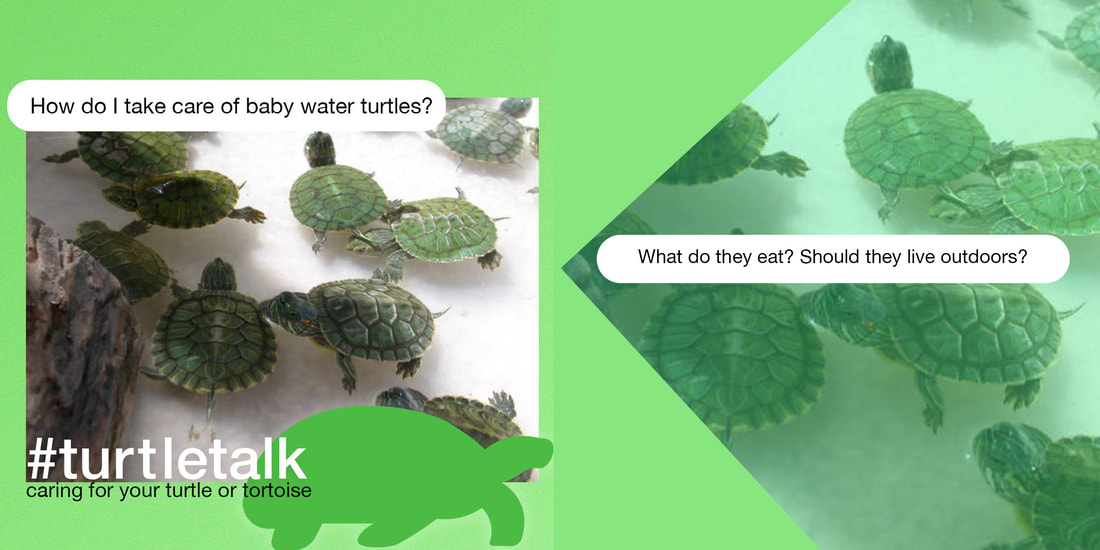
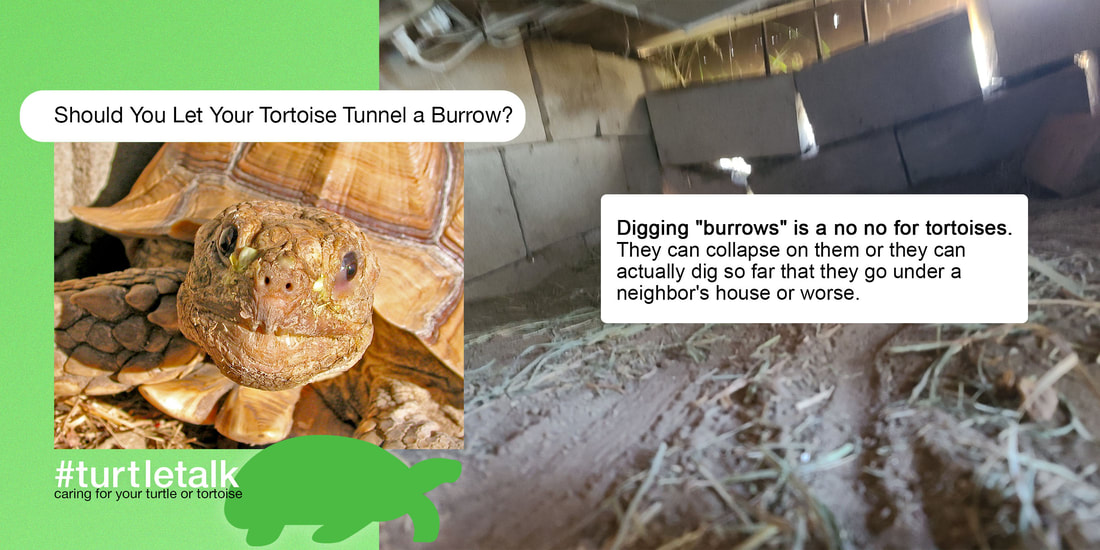
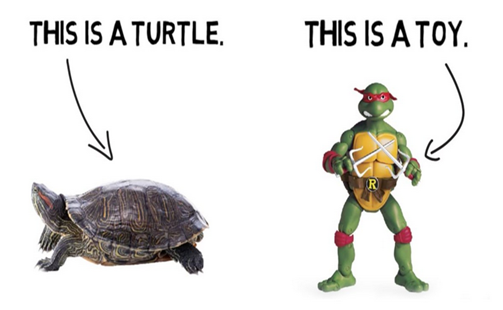

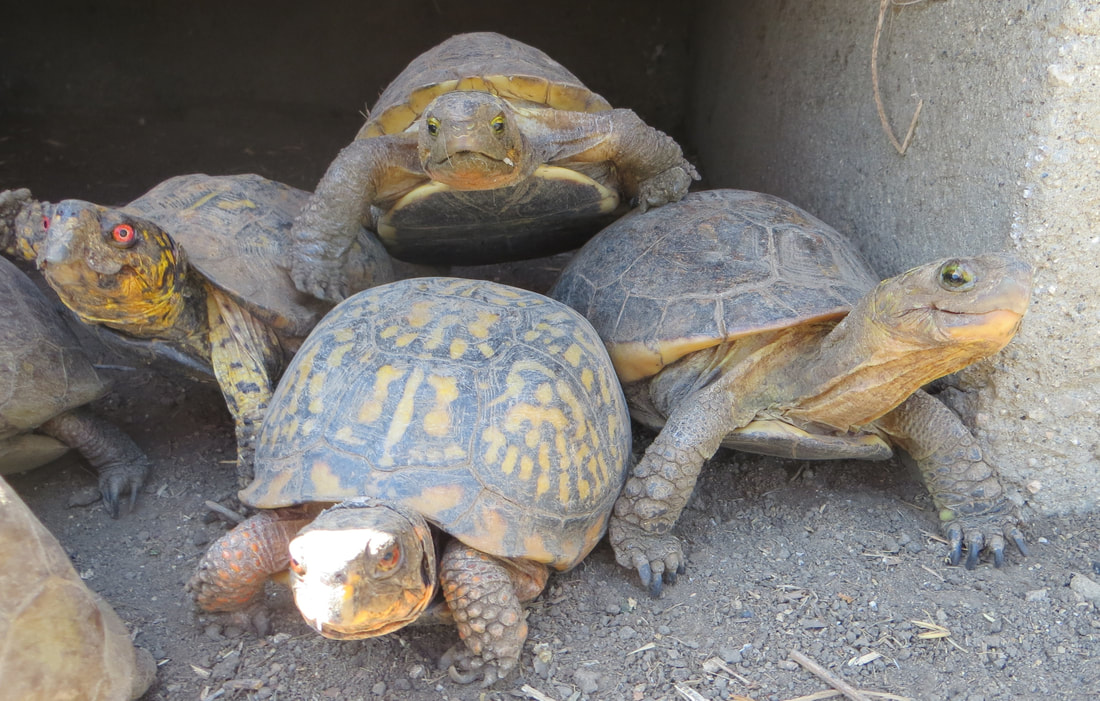
 RSS Feed
RSS Feed